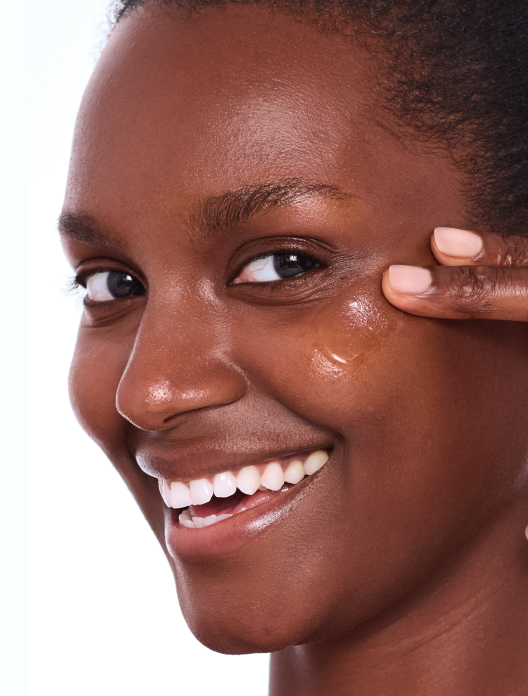

Find Your Balance
Clarifying complex to tackle blemishes

There are generally considered to be six key different types of spots. Some are milder and more common, while others are more severe and therefore more likely to lead to long-term scarring. Working out which kind of blemish you’re working with will give you the tools you need to find an effective treatment, and an indication of whether you might need to seek the advice of a doctor or dermatologist.
These six different types of spots each have unique characteristics that impact their feel and appearance, as well as their severity. Here’s how to spot the difference between them:
Open comedones are more commonly known as blackheads. They form when excess sebum (oil) and dead skin cells build up in the hair follicle. It’s a myth that they get their darker colour as they’re housing trapped dirt. In fact, it’s due to the fact the blemish is open at the top, letting air in. Oxygen turns the oil and dead skin cells black, in the same way a cut apple left on the kitchen sideboard turns brown over time.
Comedones are the mildest form of blemish and acne. Closed comedone is the medical term for what most of us would refer to as a whitehead. Similarly to blackheads, whiteheads are also formed when hair follicles become clogged up with oil and dead skin cells. The difference is that whiteheads are closed at the top, which is why they retain their lighter colour.
An extension of comedones, papules are whiteheads or blackheads that have become inflamed. They tend to be relatively small bumps that are red and raised, and can be sore to the touch.
If we asked you to picture a spot, we’re pretty sure it’ll be a pustule that springs to mind. They’re raised with a yellow head and surrounded by a red, angry circle. Confusingly, pustules can sometimes look similar to whiteheads. The real difference is that they run deeper into the skin and are much more inflamed. The bump is also filled with pus, instead of dead skin cells and oil.
Nodules present as big, raised bumps hiding beneath the surface. They are caused by a blockage lodged deep in the skin, and can sometimes be painful. Nodules are not always red, and tend to be the same colour as your skin tone. They are counted among the most severe forms of acne, alongside cysts.
Scooping the award for the most uncomfortable form of acne, cysts are tricky to contend with. Like nodules, they are large bumps beneath the skin, except cysts are filled with pus, which makes them feel softer to the touch. Nodules and cysts are the most likely to scar, and in most cases will require the help of a doctor or dermatologist who can prescribe medical-grade products and treatments.
Shop the article


Clarifying complex to tackle blemishes


Retinal/niacinamide serum for visibly smooth, even skin, suitable for all skin types